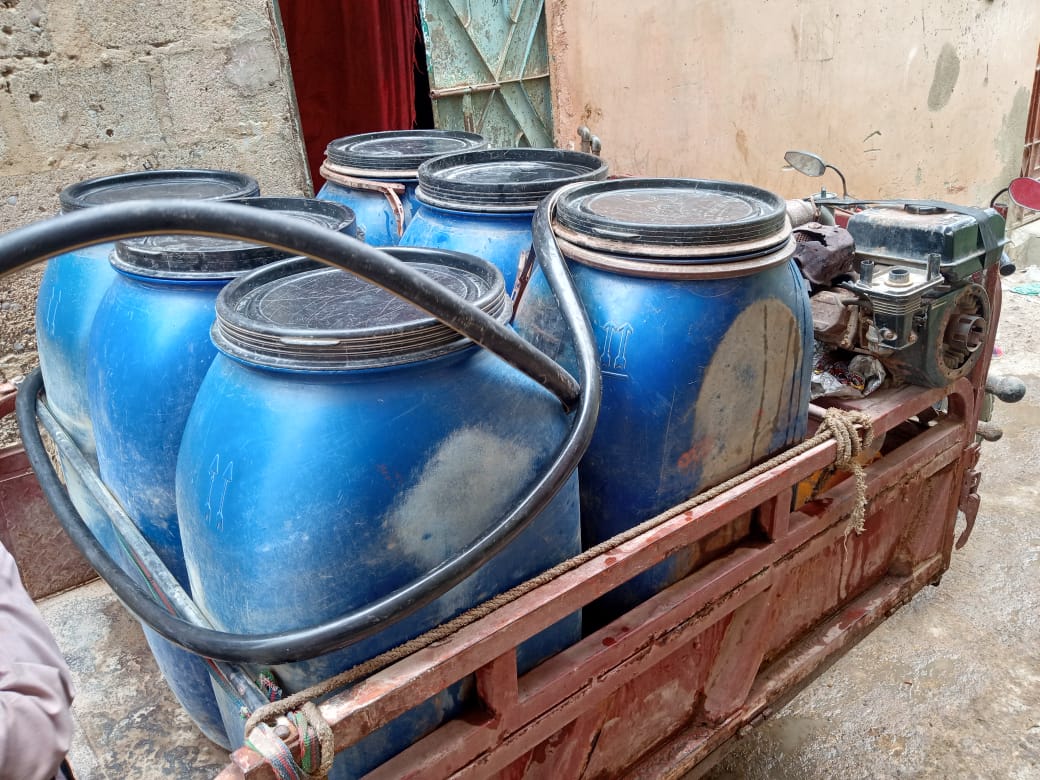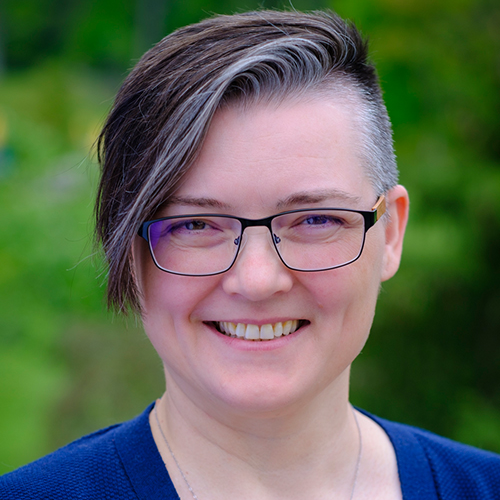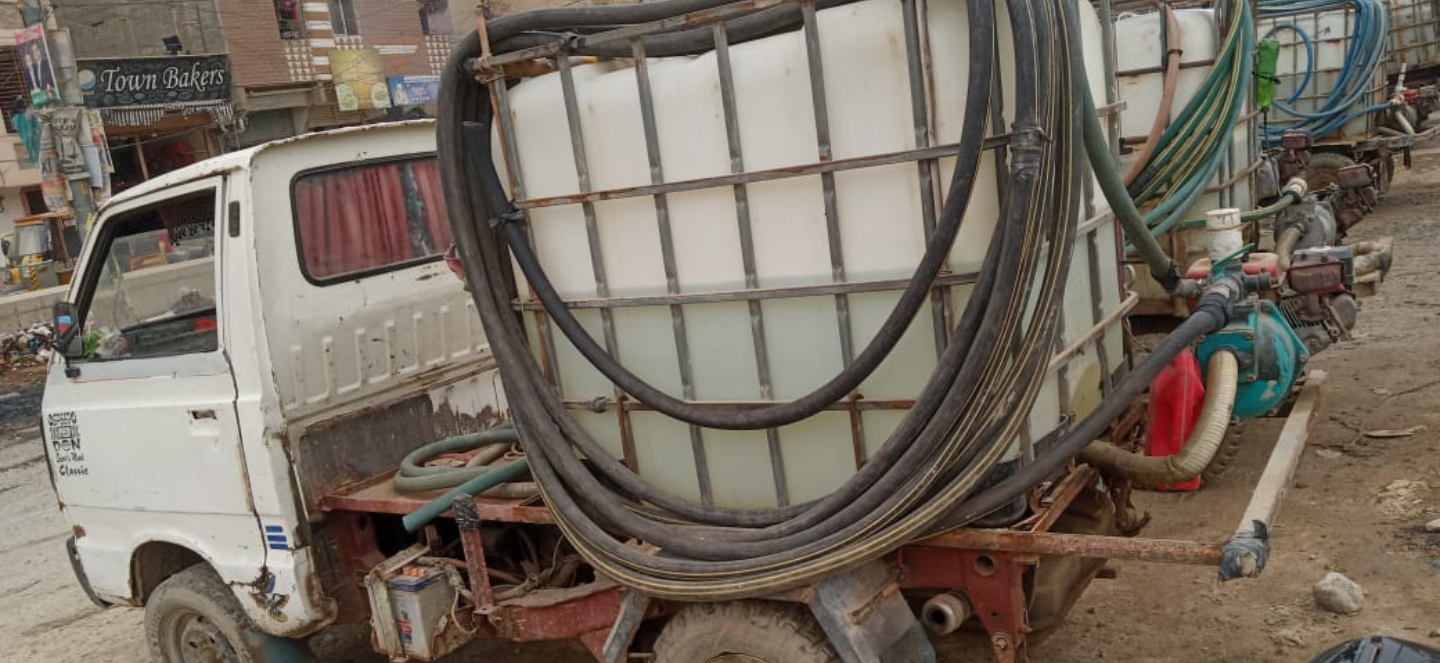
Who pays for water? MSU researchers examine Karachi’s water mafia, local experts reflect on Michigan’s water woes
Published June 3, 2025
In the humid heat of Karachi—Pakistan’s largest city and home to more than 20 million people—a tanker truck connects to a fire hydrant and begins siphoning water. This is not unusual. These tankers are part of what’s known as the “water mafia” (or “tanker mafia”), a loosely organized network that steals water from the public supply and sells it back to residents at inflated prices. While exploitative, the water they provide remains the only viable option for many low-income neighborhoods in Karachi.
At Michigan State University, PhD student Noormah Rizwan and Assistant Professor James Sears are studying how this system operates, and asking the questions: 1) Are systematic inequalities paving the way for the “Water Mafia”? and 2) What is the social impact of the “Water Mafia”?

Noormah Rizwan, PhD Student in the Department of Agricultural, Food, and Resource Economics.
Through surveys with 460 households and 17 tanker operations, they found that the tanker network both reinforces inequality in Karachi and fills a critical gap.
Rizwan explained, “households that might otherwise be receiving pipe water regularly are now receiving it less regularly because that water is being taken out of the system. But we also see that about 48% of households in our data aren’t even connected to the pipe infrastructure because of where they’re located.”
By siphoning water from the system, the water mafia creates artificial scarcity, worsening existing shortages over time. But eliminating the mafia entirely without expanding public infrastructure would leave many low-income households, especially those in informal settlements, with no access to clean drinking water.
Emergence of the water mafia
Karachi gets most of its water from the Indus River by way of Keenjhar Lake, a human-made reservoir. The Hub River also contributes surface water, but its supply is more dependent on rainfall—something that has become unpredictable over the past 30 years due to climate change.
Further complicating the city’s water shortage, the population ballooned from 5 million in 1981 to over 20 million in 2023, driven by internal migration and the arrival of refugees from Afghanistan and Bangladesh. The Karachi Water and Sewerage Corporation (KWSC) struggled to keep up. Decades of underinvestment, urban mismanagement, and infrastructure neglect left the utility unable to meet the city’s growing demand.
In response to early water distribution challenges, the municipality partnered with the private sector in the 1970s to sell water through government-operated tankers at government rates. But by the late 1980s, continued municipal failure and growing profit opportunities gave rise to an unregulated network of private operators—the water mafia.
Today, Karachi receives only 550 to 600 million gallons of water per day—far short of the estimated 1,200 million gallons it needs. As a result, an estimated 8,000 to 10,000 tankers make 40,000 to 50,000 deliveries each day, many operating illegally.
The burden of this fractured system falls hardest on Karachi’s poorest residents. As Rizwan explained, poor households receive just eight hours of water per week, compared to more than 26 hours for wealthier households.

Jerrycans used for water transport in Karachi. PHOTO Courtesy of Noormah Rizwan.
“Because of that, we see that poor households end up relying a lot more on the tankers, having to spend a huge percentage of their income on just water,” she said.
Rizwan and Sears found that Karachi’s poorer residents spend between 15% and 60% of their monthly budget on water, often at the expense of other essentials like education and healthcare. In contrast, households with reliable piped water, spend just 2%.
While troubling, this disparity in access to safe and affordable drinking water is not unique to Karachi, Pakistan. Thousands of miles away, in U.S. cities on the shores of the Great Lakes, vulnerable communities are still recovering from their own version of a water crisis shaped by aging infrastructure, policy failures, and long-standing environmental injustice.
Water affordability in Flint
The Flint water crisis began in 2014 after the city switched its water source from Lake Huron to the Flint River as a short-term, cost-saving measure. Without proper corrosion control, lead from aging pipes leached into the drinking water, exposing thousands of residents and triggering a public health emergency. Since 2016, Flint’s water system has met state and federal safety standards, but the long-term effects of the crisis are still felt throughout the community.
Elin Warn Betanzo, a national drinking water expert who helped uncover the Flint water crisis, explained that Flint, Highland Park, and Benton Harbor—all low-income communities in Michigan—continue to struggle with water quality and affordability.
“I haven’t seen a quantitative analysis for 2024, but it’s very possible that these three cities have some of the highest water rates in the state,” she said. Flint, in particular, faces some of the highest water bills in the nation, despite ongoing distrust in the water’s quality.
In 2016, Flint households were spending 7% of their monthly income on water and sewer charges—well above the affordability targets of 2% for those below the federal poverty line and 3% for those above it. As of 2025, residents continue to spend a significant portion of their income on water, though the exact percentage is unclear due to limited data.
Amid ongoing affordability concerns, the Great Lakes Water Authority (GLWA), Flint’s primary water supplier since 2017, approved a 5.9% water rate increase set to begin July 1, 2025. To protect residents from higher bills, Flint City Council approved a $2 million transfer of federal stimulus funds, and officials say a long-term solution is in progress. Nonetheless, the city plans to heighten its collection efforts by issuing disconnection notices and resuming shutoffs for nonpayment—measures that place added strain on households already struggling to afford water.
“I find it concerning when I read reports from the water system saying, ‘We’re turning off the water for people who don’t pay their bills,’ because this always includes people who can't pay their bills,” Betanzo said. “That’s a public health problem. Everyone needs running water in their home, regardless of whether they can afford their water bill.”
Betanzo pointed to Detroit’s Lifeline Plan and the GLWA’s Water Residential Assistance Program (WRAP) as important efforts that support low-income households, but said funding cuts have decreased enrollment in both. She stressed the need for permanent, sustainable funding at the state or federal level to ensure long-term water affordability in Michigan and beyond.
Restoring water access and trust in Detroit
Detroit sits at the heart of the Great Lakes, which holds 21% of the world’s surface freshwater. Yet it continues to face challenges around water quality, affordability, and access, made worse by its aging infrastructure and a history of disinvestment.
Beginning in 2013, as the city faced an impending bankruptcy, the Detroit Water and Sewerage Department (DWSD) began shutting off water for thousands of residents in an effort to pressure payment and recover lost revenue. Between 2014 and 2020, DWSD completed more than 140,000 water shutoffs for nonpayment—an aggregated total that includes repeat disconnections of some accounts. While the average number of residential shutoffs per year was about 23,000, the scale and visibility of the effort made it one of the most widely reported and debated water shutoff campaigns in the country.
Faced with mounting public pressure to address these shutoffs, DWSD launched the Lifeline Plan in 2022: an income-based water affordability program offering fixed monthly rates of $18, $43, or $56, roughly 2% of a household’s income.
Matt Phillips, DWSD’s Chief of Staff and Chief Customer Service Officer, said the plan has three goals: to eliminate arrearages, ensure affordability, and support necessary repairs.
“We know there’s a lot of plumbing issues within low-income households that need to be repaired,” Phillips said. “As things continue to leak, it costs more money. Money that’s impacting the household, money they could be spending on other resources like heating, cooling, medicine.”
Like Betanzo, Phillips noted that federal grants, including the Low-Income Household Water Assistance Program (LIHWAP), have disappeared, leaving the Lifeline Plan to rely on limited state grants. This funding decrease has led to a drop-off in program enrollment from approximately 28,000 households to 8,136.
As efforts to improve affordability continue, rebuilding public trust more than a decade later remains an equally difficult challenge.
DWSD Deputy Director Sam Smalley emphasized that restoring trust after the city’s water crisis takes more than just following regulations. It requires community outreach, responsive service, and practicing the transparency already built into the system. “In the water business, if you mess up, you actually have to tell on yourself,” he said, citing Michigan’s Public Act 399 and the federal Safe Drinking Water Act, which both require utilities to notify the public of violations or other risks to public health. “We certainly do that,” he added. “We have board and committee meetings with time for public comment, and our public affairs team is regularly out in the community.”
This approach is part of a broader goal to become a national leader in lead service line replacement, Smalley said. By staying ahead of federal requirements, building public trust, and recognizing when to lean on community partnerships and grassroots leaders.

Jennifer Carrera, MSU Associate Professor of Sociology.
Moving toward equity in water systems
On the surface, Karachi’s informal settlements and American cities like Detroit, Flint, Highland Park, and Benton Harbor might seem worlds apart. Pakistan is currently facing widespread water shortages and informal water theft, while U.S. cities struggle with aging infrastructure and policy failures. But the patterns are noticeably similar: in both cases, water systems have been mismanaged in ways that disproportionately impact low-income communities and undermine public trust.
The question now is how to move forward. Throughout Michigan, researchers and utility leaders, city officials and community advocates are working to define what an equitable, resilient drinking water system looks like, not just in the pipes or through policies, but in the lives of the people who have lived through these crises. Learning from global examples and Michigan’s own history, the path ahead requires centering the voices of those most affected and ensuring they’re part of shaping what comes next.
MSU Associate Professor of Sociology Jennifer Carrera, who specializes in environmental justice and community-based participatory research, believes meaningful change begins with shifting who gets to define the problem.
“One of the biggest mistakes we make is thinking we know what the problem is without asking the people who are living it,” she said. “We need to stop approaching communities as sites of intervention and start seeing them as sites of knowledge.”
In both Karachi and Michigan, that shift may be the key to restoring trust and building water systems that work for everyone.
Story by Aja Witt
